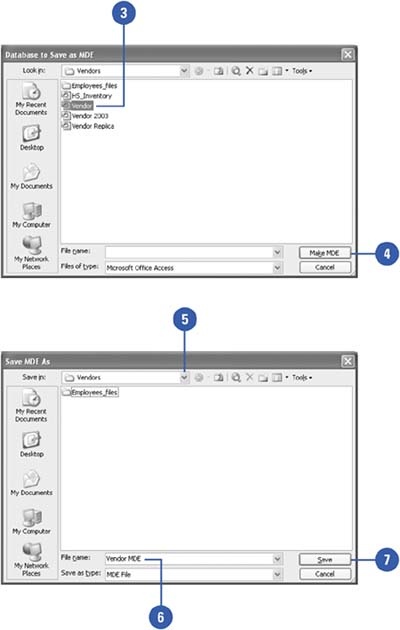Optimizing Performance with an MDE File
If you share your modules with others, you may want to convert the database file to MDE format. In creating an MDE file, Access removes the editable source code and then compacts the database. Your VBA programs will continue to run, but others cannot view or edit them. There are several advantages to converting a database to MDE format. In MDE format, a database is smaller, and its performance will improve as it optimizes memory usage. Note, however, that you should create an MDE file only after the original database has been thoroughly tested.
Make an MDE File
 | Close your database. |
 | In the Access program window, click the Tools menu, point to Database Utilities, and then click Make MDE File. |
 | Locate and select the database you want to convert to MDE format. |
 | Click Make MDE. |
 | Specify a location. |
 | Enter a name for the MDE file. |
 | Click Save. |

|
You can save the original database.
Make a backup copy of the original database. You'll need it if you have to edit your VBA modules or add new ones. |
|